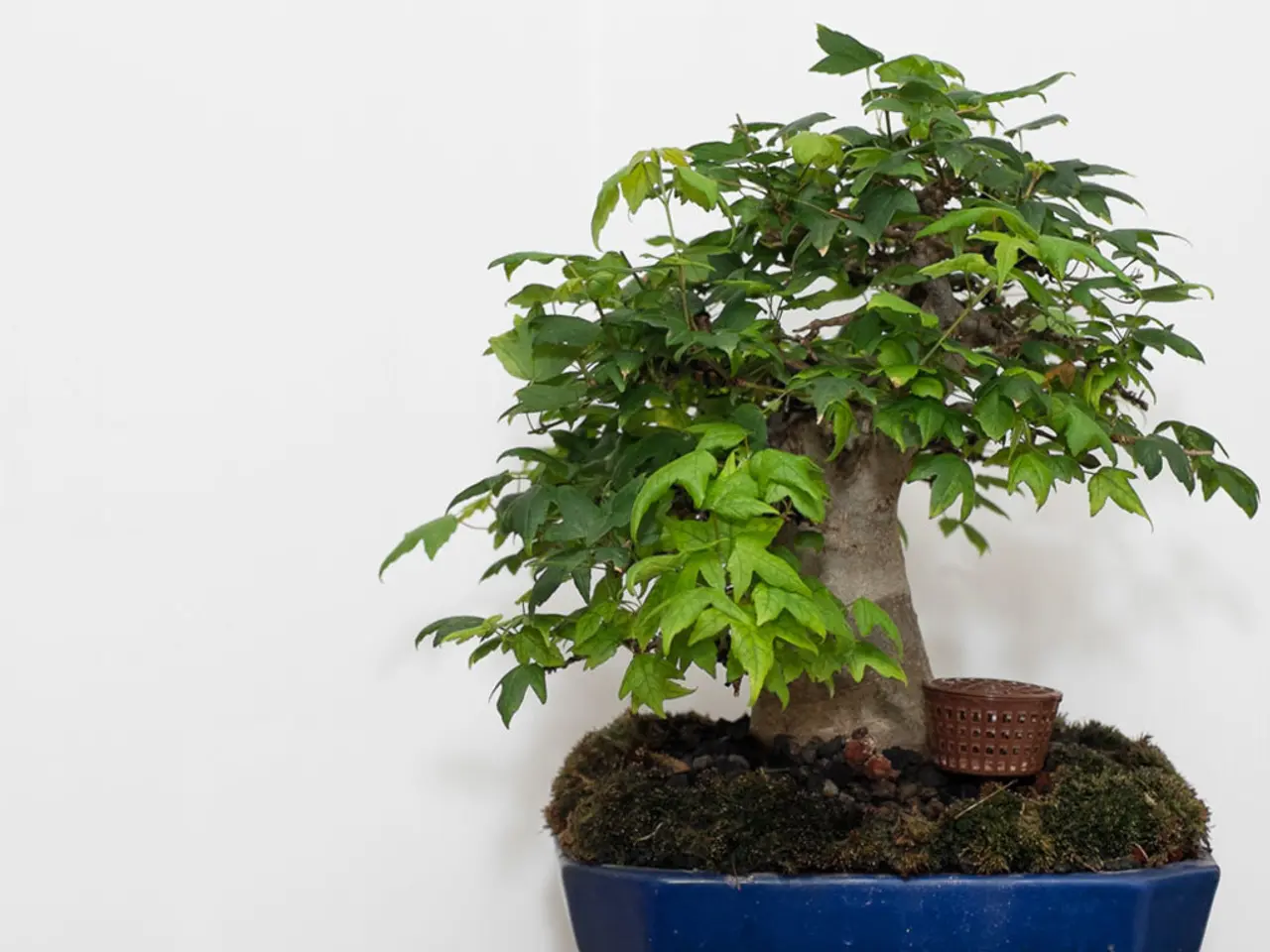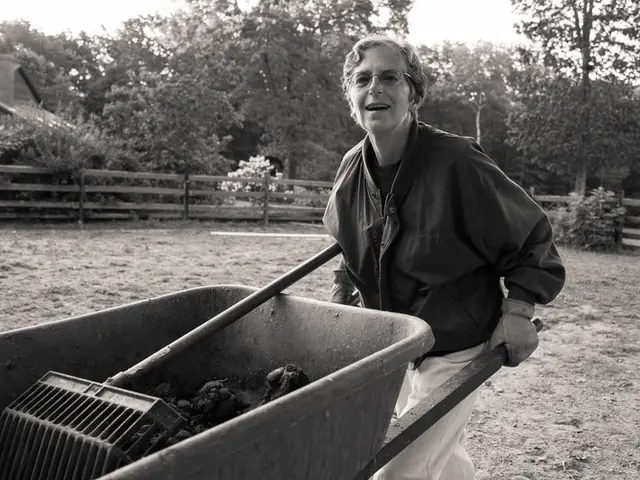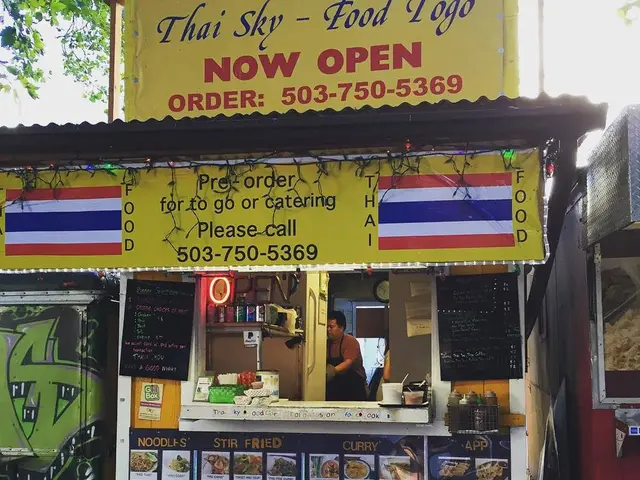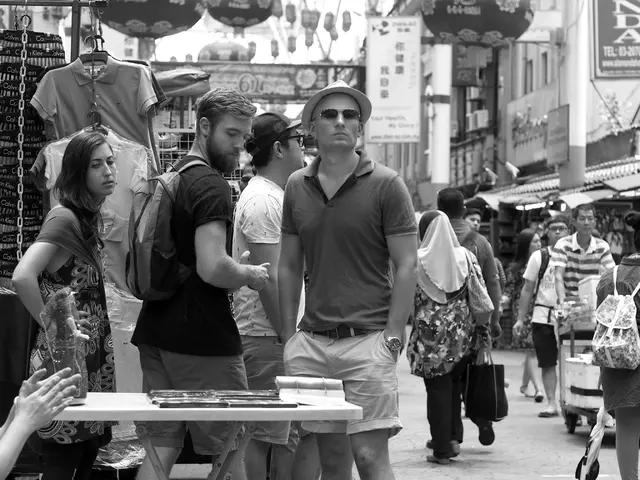A Japanese bonsai tree refers to a specific type of miniature tree, originating from Japan, that's meticulously molded and pruned to emulate the branches and shape of mature trees.
In the heart of ancient China, around the 8th century, a captivating art form known as penjing was born. This practice, which involved creating miniature landscapes with trees, rocks, and figurines, was introduced to Japan, where it evolved into something truly unique - bonsai.
Bonsai, a Japanese specialty, diverges from penjing in its focus and approach. While penjing often constructs entire miniature landscapes, bonsai hones in on the cultivation of miniature trees, emphasizing simplicity, balance, and refined aesthetics. By the 17th century, bonsai had become a popular pastime among Japanese nobility, developing distinct techniques and styles different from penjing.
Scope and Composition
One of the key differences between penjing and bonsai lies in their composition. Penjing often creates intricate miniature landscapes, incorporating various elements such as trees, rocks, and figurines to represent natural scenes. In contrast, bonsai primarily centers on a single tree or a small grouping of trees, placing the emphasis on the form and spirit of the tree alone.
Stylistic Approach
The stylistic approach of penjing tends to be more elaborate and expressive, sometimes representing dramatic natural scenes. Bonsai, on the other hand, values subtlety, minimalism, and balance, shaped to evoke harmony and tranquility.
Container and Display
Bonsai trees are traditionally styled and displayed in small pots with rooted plants, focusing on seasonal changes and detailed pruning. Penjing containers may be larger, allowing for more complex compositions.
Cultural Philosophy
Bonsai was significantly influenced by Japanese Zen and aesthetics like wabi-sabi (beauty in imperfection and transience), which shaped its restrained style. Penjing reflects traditional Chinese landscape philosophy with broader, more symbolic narratives.
Styles of Japanese Bonsai
Japanese bonsai trees come in various styles, each with its unique characteristics. For instance, the slant (shakan) style features a trunk that emerges from the soil at an angle, causing the apex to be slanted away from the root base. The cascade (kengai) style models trees growing off mountainsides or over water, with the apex extending beneath the lip of the container in a half cascade and below the base in a full cascade.
The formal upright (chokkan) style features a straight, upright trunk with branches thickest at the base and thinner as they move towards the crown. The informal upright (moyogi) style has visible curves in the trunk or branches, but the apex is directly above the base of the trunk.
Characteristics of Japanese Bonsai
Japanese bonsai trees aim to match the proportions of a natural tree as closely as possible. They typically avoid overly manicured or symmetrical designs, reflecting the asymmetry found in nature. The ultimate goal of Japanese bonsai is to create a miniature, realistic representation of a tree one might see growing in the wild.
Bonsai as Living Art
A Japanese bonsai tree is a living piece of art that mimics the natural world. It is small and planted in a shallow container to emphasize its miniaturization. The tree itself is the key element in Japanese bonsai, and the bonsai container is carefully chosen to complement its dominant traits.
Bonsai and Zen Buddhism
Japanese bonsai trees are grown to embody three aspects of Zen Buddhism: balance, harmony, and simplicity. The practice originated in ancient China over 1,300 years ago, and it was later influenced by the landscape and culture of Japan. Buddhist monks are believed to be the first to bring the tiny specimens of bonsai from China to Japan as gifts and religious souvenirs.
Modern Bonsai Practice
Today, the platform's online store provides tools for growing and maintaining bonsai trees. It offers resources for learning bonsai tree care, including articles, an online shop, and a Facebook group for connecting with other bonsai enthusiasts. The wounds from pruning or wrapping in Japanese bonsai trees should be healed or concealed, with no permanent marks or evidence of shaping.
In conclusion, bonsai is a specialized Japanese evolution of Chinese penjing that narrows the focus to miniature trees with restrained, refined artistry compared to penjing’s broader landscape storytelling. This evolution occurred over centuries, with bonsai developing its own unique cultural and artistic identity by the early modern period in Japan. Despite their similarities, bonsai is more refined and stylistic compared to penjing, which is more wild and free-form.
Engaging with the narratives of human culture and nature, the diversity of home-and-garden pursuits spans from the intricate miniature landscapes of penjing to the refined art of bonsai. As the Japanese counterpart to penjing, bonsai concentrates on the growth and cultivation of miniature trees, adhering to the principles of simplicity, balance, and austere aesthetics.
Embracing the essence of Japanese lifestyle, bonsai artistry stems from the Zen philosophy, placing an emphasis on harmony, tranquility, and minimalism, offering a subtle juxtaposition to the more elaborate and expressive penjing techniques.




